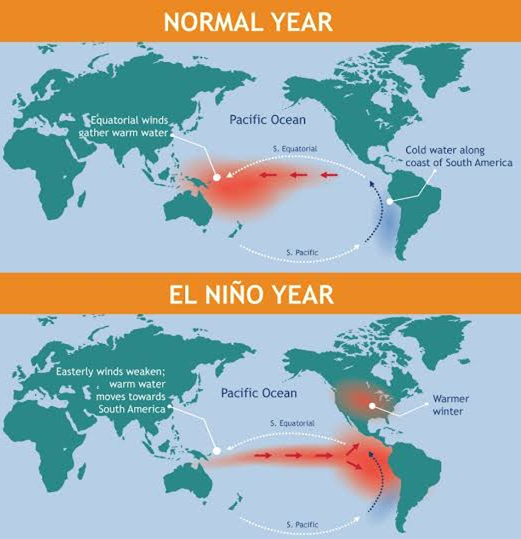

20th April 2023 (7 Topics)
Context
As per the prediction of most forecast models, the climate system’s biggest player – El Niño – will return for the first time in nearly four years.
How El Niño affects the planet?
- Wet and dry areas: Warm water affects air currents that leave areas wetter or drier than usual.
- Storms: It can ramp up storms in some areas, like the southern U.S. while tending to tamp down Atlantic hurricane activity.
- Impact on marine life: El Niño can also wreak havoc on the many marine ecosystems that support the world’s fishing industries, including coral reefs and seagrass meadows.
- Extreme ocean warming: Specifically, El Niño tends to trigger intense and widespread periods of extreme ocean warming known as marine heat waves.
- Global ocean temperatures are already at record highs, so El Niño-induced marine heat waves could push many sensitive fisheries to a breaking point.
|
In the Bay of Bengal east of India, interactions between El Niño and a tropical airflow pattern known as the Walker Circulation elevate the risk for marine heat waves. |
How would it impact India?
- Affected monsoon: India’s agricultural production depends on the southwest monsoon, which accounts for 75% to 90% of the total annual rainfall from June to September. El Niño-Southern Oscillation (ENSO) significantly affects the southwest monsoon.
- Drought: The monsoon-disrupting weather pattern causes climate chaos across the globe and, often, drought in India.
|
Between 2001 and 2020, India saw seven El Nino years. Of these, four resulted in droughts (2003, 2005, 2009-10, 2015-16). These years also saw kharif or summer-sown farm output decline by 16%, 8%, 10% and 3%, stoking inflation. Kharif harvests account for nearly half of the country’s annual food supply. |
|
Back to Basics El Nino:
|




